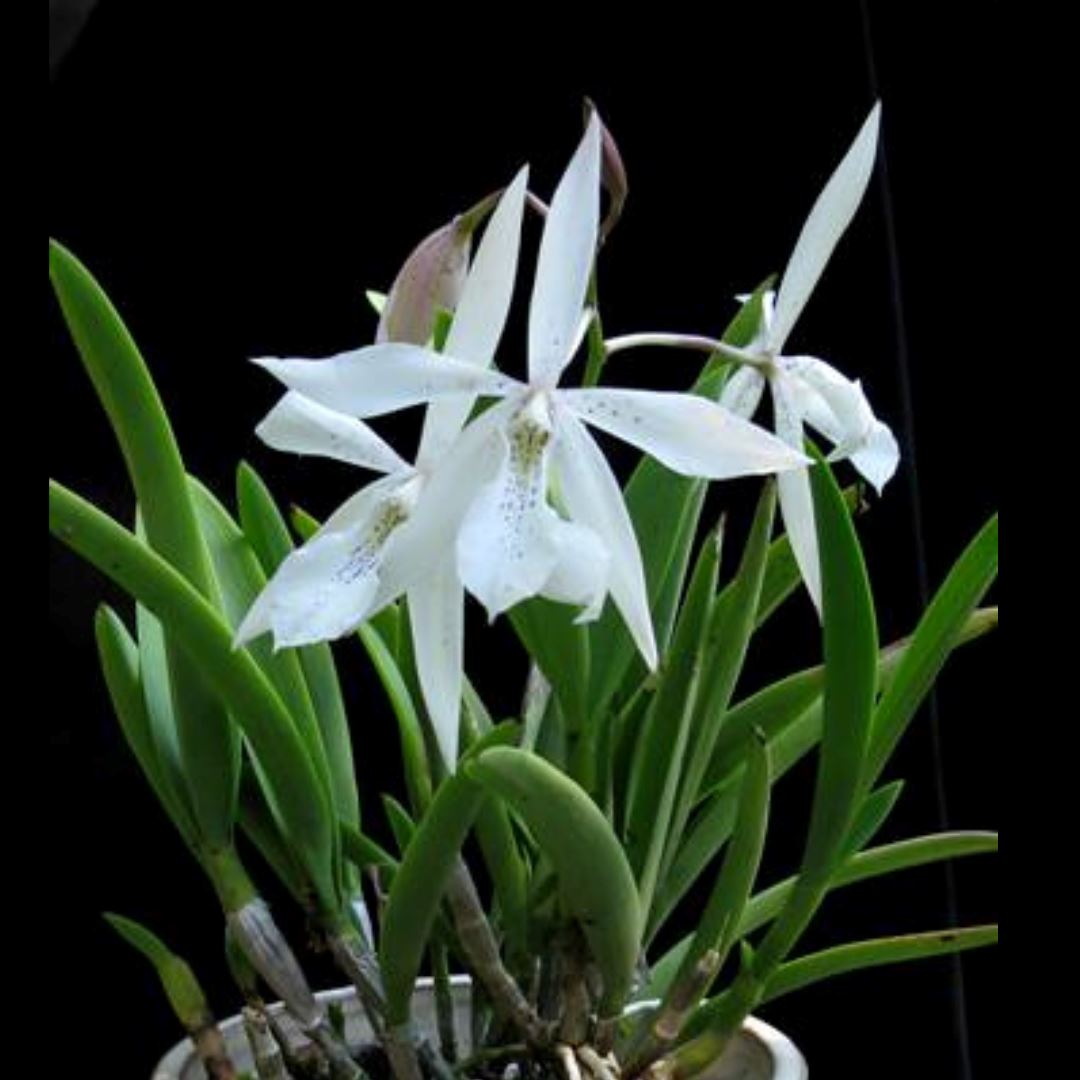La Foresta Orchids
Brassavola nodosa x Caularthron bicornutum
Brassavola nodosa x Caularthron bicornutum
Couldn't load pickup availability
Caulavola Colmanii, a captivating primary hybrid, is the result of a cross between Brassavola nodosa and Caularthron bicornutum. This orchid is a sequential bloomer, gracing your space with a continuous display of its exquisite blooms. The flowers are short-lived but make a memorable impact with their enchanting night fragrance, inherited from Brassavola nodosa. The blooms exhibit a creamy white base adorned with delicate purple lavender spots and a striking yellow callus on the lip, showcasing the distinctive lip shape from Caularthron bicornutum.
Cultivating Tips for Caulavola Colmanii:
- Light: Provide bright, indirect light to Caulavola Colmanii, similar to what you would offer to Cattleya orchids. An east or west-facing window is ideal.
- Temperature: Maintain intermediate to warm temperatures, with daytime highs between 75-85°F (24-29°C) and nighttime lows around 60-65°F (16-18°C).
- Humidity: Aim for a humidity level of 50-70%. Use a humidity tray or humidifier if needed to maintain these levels.
- Watering: Water thoroughly and allow the potting medium to dry slightly between waterings. Reduce watering during the winter months when the plant's growth slows.
- Fertilizing: Use a balanced orchid fertilizer at half strength every two weeks during the growing season. Reduce feeding during the winter rest period.
- Potting Medium: Use a well-draining orchid mix, such as bark or a combination of bark, perlite, and sphagnum moss. Repot every 2-3 years or when the medium breaks down.
Brassavola nodosa, commonly known as the "Lady of the Night" orchid, is renowned for its exquisite night-time fragrance that fills the air with a sweet, citrus-like scent. This species produces elegant, white greenish flowers with a distinct, heart-shaped lip. The flowers typically bloom in clusters and are most fragrant in the evening, attracting nocturnal pollinators. Brassavola nodosa is a resilient orchid that thrives in bright, indirect light and warm temperatures, making it a popular choice among orchid enthusiasts.
Caularthron bicornutum, formerly known as Diacrium bicornutum, is native to regions north of the Amazon River in South America. In its natural habitat, the hollow pseudobulbs often host stinging ants. This orchid blooms from January to June, producing inflorescences carrying 4-20 white flowers. The basal half of the lip is spotted dark red, with a bright golden yellow callus. The sepals are ovate-elliptic, subacute, measuring up to 1.3 x 0.7 inches (3.2 x 1.8 cm), while the petals are broadly elliptic to suborbicular, abruptly acuminate, up to 1.1 x 0.9 inches (2.8 x 2.3 cm). Each bloom emits a gentle citrus scent and measures approximately one and a half inches or slightly larger in diameter.
This is a blooming size orchid in a 4" pot about 1 to 2 years to bloom, grown from seed, limited!
In summary, Caulavola Colmanii, a captivating orchid hybrid derived from Brassavola nodosa and Caularthron bicornutum, enchants with its sequential blooms and night fragrance reminiscent of its parent species. With creamy white petals adorned with purple lavender spots and a distinctive yellow callus, this orchid thrives in bright, indirect light and intermediate to warm temperatures, making it a delightful addition to any orchid collection.














